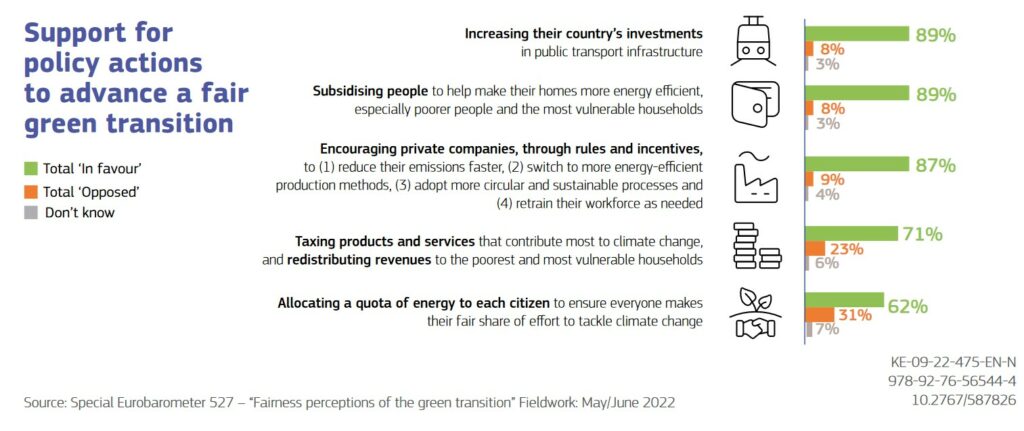European Union Green Deal: Ending packaging waste by 2030
The European Union is working on a series of proposals to further control packaging waste and especially its sustainability. In particular, new laws are being prepared against “greenwashing” in the packaging sector, in order to offer consumers greater transparency on the packaging used.
The European Commission is proposing new European Union-wide rules on packaging to tackle this growing source of waste and consumer frustration. On average, each European generates around 180 kg of packaging waste per year. Packaging is one of the biggest users of virgin materials, with 40% of plastics and 50% of paper used in the EU going into packaging. Without action, the EU would see a further 19% increase in packaging waste by 2030, and even 46% for plastic packaging waste.
The new rules aim to stop this trend. For consumers, they will ensure reusable packaging options, eliminate unnecessary packaging, limit over-packaging and provide clear labels to encourage proper recycling.
For industry, they will create new market opportunities, especially for small businesses, reduce the need for virgin materials, strengthen Europe’s recycling capacity and make it less dependent on primary resources and external suppliers. These rules will put the packaging sector on a path to climate neutrality by 2050.
The Commission is also providing clarity to consumers and industry on biobased, compostable and biodegradable plastics: clarifying for which applications these plastics are truly beneficial to the environment and how they should be designed, disposed of and recycled.
The proposals are key elements of the Green Deal for Europe’s Circular Economy Action Plan and its goal of making sustainable products the norm. They also respond to the specific demands of Europeans expressed at the Future of Europe conference.
Make all packaging recyclable by 2030
The proposed revision of EU legislation on packaging and packaging waste has three main objectives. Firstly, to avoid the production of packaging waste: to reduce the amount of packaging, to limit unnecessary packaging and to promote reusable and refillable packaging solutions. Secondly, to stimulate high quality (“closed loop”) recycling: to make all packaging on the EU market recyclable in an economically viable way by 2030. Finally, to reduce the need for primary natural resources and create a well-functioning market for secondary raw materials, by increasing the use of recycled plastics in packaging through binding targets.
- The headline target is to reduce packaging waste by 15% by 2040 per Member State and per capita, compared to 2018. This would result in an overall reduction of waste in the EU of almost 37% compared to a scenario without legislative changes. This reduction can be achieved through both reuse and recycling.
- To encourage reuse or refilling of packaging, which has fallen sharply over the past 20 years, companies will have to offer consumers a certain percentage of their products in reusable or refillable packaging, for example for drinks and takeaways or online order deliveries. There should also be some standardisation of packaging sizes and clear labelling of reusable packaging.
- To combat clearly unnecessary packaging, certain forms of packaging will be banned. For example, single-use packaging for food and drink when consumed in restaurants and cafés, single-use packaging for fruit and vegetables, miniature shampoo bottles and other miniature packaging in hotels.
- Many measures aim to make packaging fully recyclable by 2030. These include setting design criteria for packaging; introducing mandatory deposit systems for plastic bottles and aluminium cans; and specifying which very limited types of packaging should be compostable so that consumers can dispose of them as bio-waste.
- There will also be mandatory levels of recycled content that producers must include in new plastic packaging. This will help turn recycled plastic into a valuable raw material, as the example of PET bottles in the context of the Single Use Directive already shows.

A virtuous Europe in terms of recycling
By 2030, the proposed measures would reduce greenhouse gas emissions from packaging to 43 million tonnes from 66 million tonnes if the legislation were not changed, a reduction equivalent to Croatia’s annual emissions. Water use would be reduced to 1.1 million m3. The costs of environmental damage to the economy and society would be reduced by EUR 6.4 billion compared to the 2030 baseline.
The proposal on packaging and packaging waste will now be considered by the European Parliament and the Council under the ordinary legislative procedure.
ALL4PACK ALL4PACK Emballage Paris ALL4Pack Emballage Paris 2022 ALL4PACK Innovation ALL4PACk innovations all4pack Packaging Paris bottles cardboard circular economy Conferences conferences space consummer goods CSR distribution durability e-commerce eco conception eco responsable eco responsible emballage environmentally friendly food safety food security innovation Intralogistics logistic logistics machines materials news packaging paper pharmaceutical plastic printing processing recyclable recycling reuse security sustainability sustainable development sustainable packaging sustainable solutions Traceability